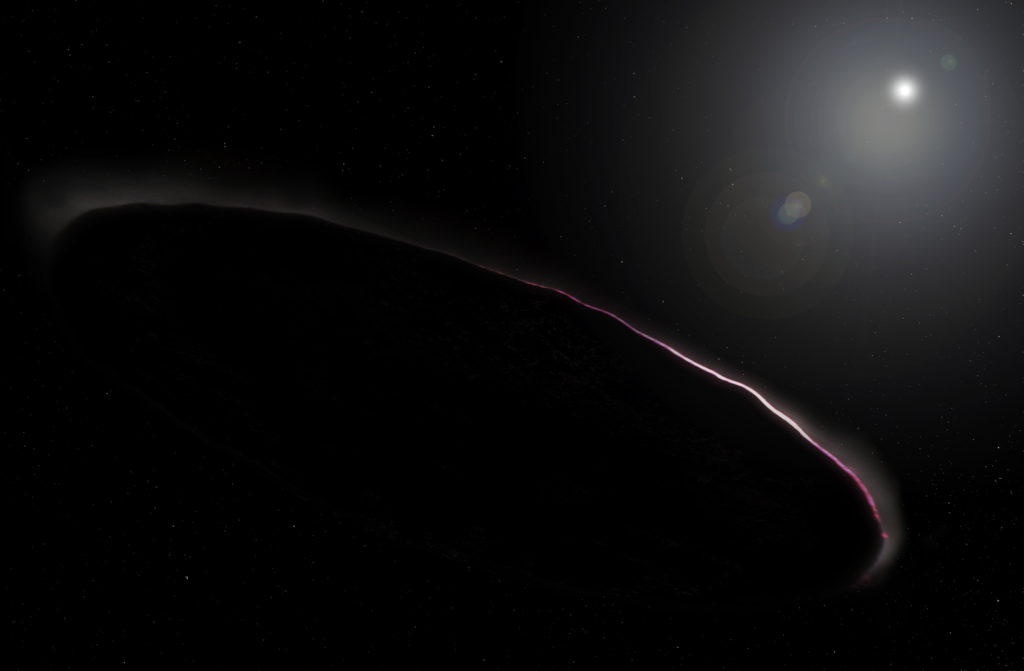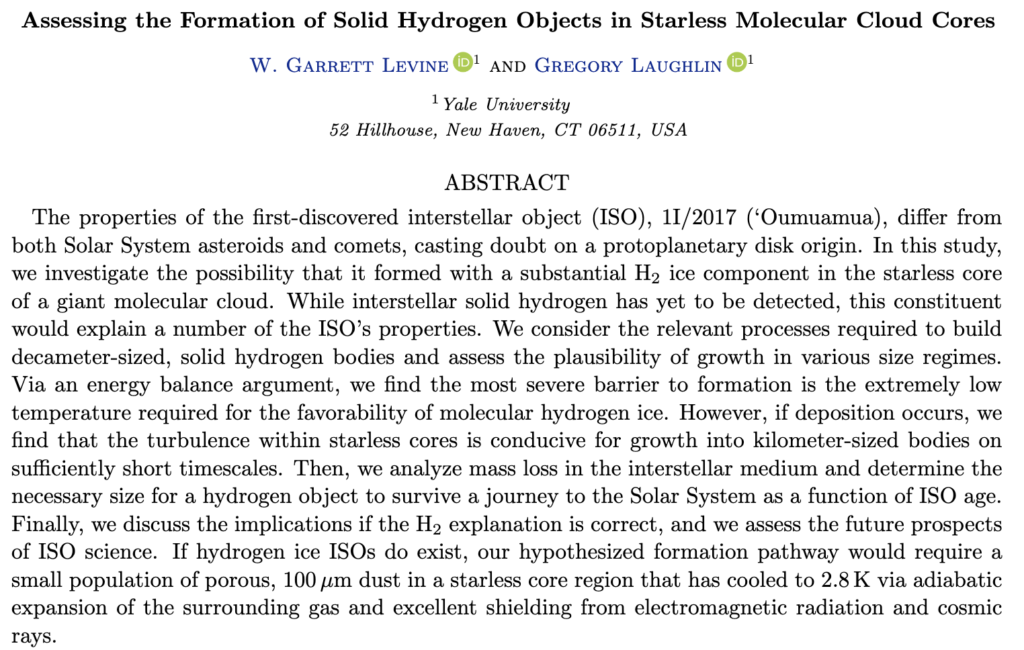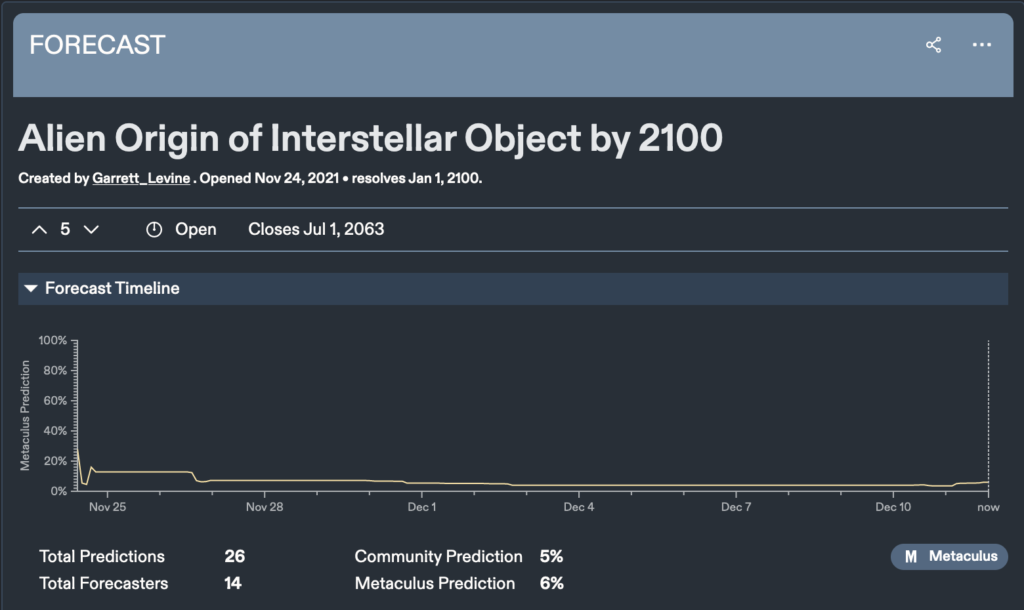
All the small things. Truth cares truth brings. I’ll take one lift. Your ride best trip… Vintage Blink played in the background. Tubular radio bulbs placed a diffuse glow on the distressed wood and polished concrete surfaces. The researcher pushed away a half-finished bowl of microgreens and, before taking another sip of single-origin espresso, eyed me with a look somewhere between amusement and concern.
“I mean really. You sound like a relic. You’ve gotta move on. You’ve gotta get with the times. ‘Oumuamua is so 2020. Everyone who’s anyone now is working on UAPs.”
It’s true that the cutting-edge has progressed to bigger and weirder things. Indeed, it’s now been over four years since ‘Oumuamua raced out of sight, and I can’t seem to let that mysterious cosmic visitor out of mind.
The ISO story has been worn smooth through years of retelling, and the details are probably well known to anyone who reads oklo.org: ‘Oumuamua entered the Solar System on a strongly hyperbolic trajectory consistent with a pre-encounter galactocentric obit that was quite close to the local standard of rest. It closed to within 0.25 AU of the Sun. Then, just after passing Earth’s orbit on its outbound leg, it was detected by Pan-STARRs at the end of the third week of October, 2017. Global follow-up efforts with space and ground-based telescopes were quickly mounted. ‘Oumuamua was observed to have a strongly varying light curve, no detectable coma, a slightly reddish color, and it experienced a small but significant non-gravitational acceleration on its way out.
For over a year, I was very enthusiastic about the possibility that ‘Oumuamua’s properties could be explained by appealing to a composition rich in molecular hydrogen ice. Darryl Seligman and I published a paper outlining this idea, which generated a fair amount of interest in the wider media. Last year, however, Yale graduate student Garrett Levine carried out a very detailed investigation to trace how macroscopic objects rich in molecular hydrogen ice might form in the cores of the densest, coldest molecular clouds. Our final conclusion was that while it’s not impossible, it’s very difficult for the present-day Universe to manufacture solid H2. The microwave background temperature just isn’t quite cold enough yet…

Recently, Metaculus (which has been undergoing rapid development) launched an on-line journal featuring fortified essays in which an in-depth article on a topic of interest is linked to a set of questions on which readers can predict. Garrett wrote an essay the outlines the future detection and research prospects for ISOs. Everyone’s encouraged to read it and place predictions.

